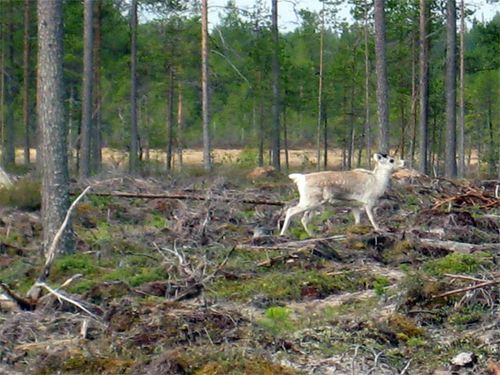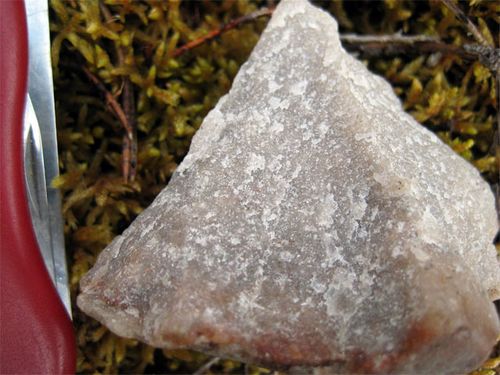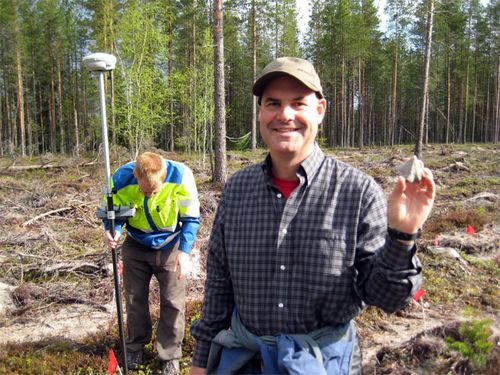A few of us went back to the Hiidenkangas site (see my post from May 18) where the big stone axe was found two days ago. We just walked the furrows left by the heavy equipment, eyes glued to the ground. In one morning we surveyed half the clearing –several acres - and found over 100 artifacts. Try doing that by excavating! We really got a lot of mapping done, and learned a lot about this settlement, thanks to those loggers. Each time we found something, (mostly fire-cracked rocks and quartz flakes) we put a red flag into the sand next to it. Sam Vaneeckhout would follow us with the GPS unit, marking where it was. The artifacts made distinct clusters on the ground, with large areas where there is nothing. It’s becoming really clear to us that artifacts weren’t moved any significant distance from their original locations.
 Andre Costopoulos, Sam Vaneeckhout, Sarah Billiar
Andre Costopoulos, Sam Vaneeckhout, Sarah Billiar
I heard a bird called a cuckoo calling repeatedly from the woods: "COO-coo, COO-coo…” If you have ever heard a cuckoo clock, you know what I mean. The clock sounds exactly like the bird.
Three small reindeer ran across the clearing and I got some pictures.
 Hiidenkangas site
Hiidenkangas site
 Hiidenkangas site
Hiidenkangas site
And, I found the coolest artifact of the day. No, it wasn’t an axe head but it was a perfect example of a "boat shaped” stone core. This piece of quartzite about the side of a large plum has a rounded lower side that is the original outside surface of the rock. The rest has concave flake scars that taper up to a point. The whole thing looks more like the Matterhorn (a famous mountain) than a boat, but that’s what they call this. A core like this is not a tool. It is something you chip flakes off to make tools from.
 Side view
Side view
 Hiidenkangas
Hiidenkangas
 Hiidenkangas site
Hiidenkangas site
I’ve got to run – lab meeting
 Sometimes sketches reveal more detail than photographs
Sometimes sketches reveal more detail than photographs
